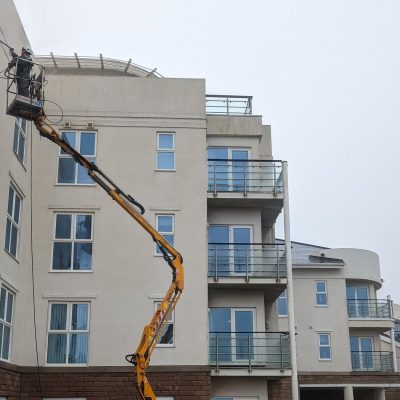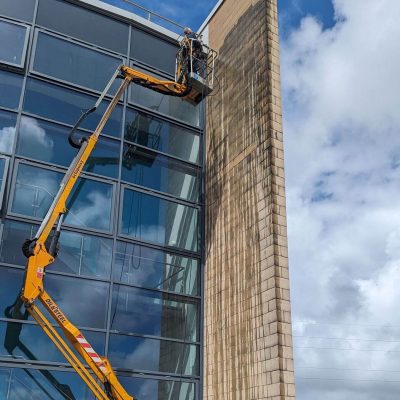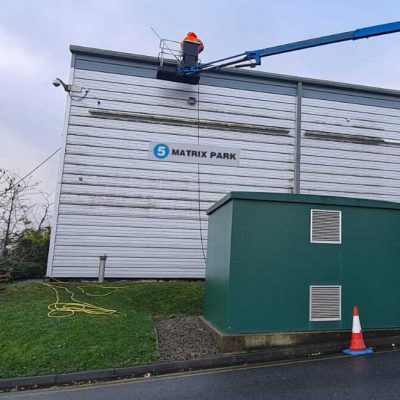Lifting equipment is essential in many workplaces, but it can also be dangerous if not properly inspected and maintained. The Lifting Operations and Lifting Equipment Regulations (LOLER) were introduced in 1998 to help ensure that lifting equipment is safe to use.
In this blog post, we’ll provide a comprehensive guide to LOLER inspections.
What is LOLER?
LOLER places duties on people and companies who own, operate or have control over lifting equipment. It requires that all equipment used for lifting is:
- Strong, stable and suitable for the proposed use
- Positioned or installed to prevent risk of injury, e.g. from the equipment or the load falling or striking people
- Visibly marked with any appropriate information to ensure safe use, e.g. safe working loads
What is considered lifting equipment under LOLER?
A wide range of equipments are covered by LOLER’s requirements, including:
- Cranes
- Forklift trucks
- Hoists
- Scissor lifts
- Pallet trucks
- Winches
- Lifting slings
- Patient hoists
- Vehicle tail lifts
- Lifting beams
- Vacuum lifting equipment
If equipment is used to lift or lower loads, it is likely to fall under the scope of LOLER. There are some exceptions, such as escalators, moving travelators/walkways and automated equipment that only lifts the load vertically.
But generally speaking, any manual or powered equipment used for lifting should be LOLER inspected.
When are LOLER inspections needed?
LOLER requires all lifting equipment to undergo a thorough examination before first use.
After this initial inspection, examinations must be carried out:
- At least every 6 months for any equipment used to lift people, e.g. mobile elevating work platforms (MEWP), passenger hoists, etc.
- At least every 12 months for other lifting equipment.
So the maximum gap between inspections should not exceed 6 months for equipment lifting people and 12 months for other lifting tasks.
How often should LOLER inspections be carried out?
As mentioned above, LOLER inspection should be carried out every 6 or 12 months.
Inspections will also be required if:
- The lifting equipment is relocated to a new site or location.
- There is a major change to the equipment, e.g. if new parts are installed.
- The equipment suffers damage or failure that could affect safety.
- If exceptional circumstances have occurred that could jeopardise safety, such as major modifications or long periods out of use.
In short, LOLER inspection intervals should never exceed 6 or 12 months depending on the type of lifting involved. But inspections will also be needed sooner if the equipment changes location or is altered in a significant way.
Who can carry out LOLER inspections?
LOLER inspections must be carried out by a “competent person”.
This means someone who has the appropriate knowledge, training and experience to thoroughly examine lifting equipment and identify any defective or dangerous parts.
There are two main options:
- Appoint an in-house competent person – Employers can nominate and train their own staff members to become LOLER inspectors, if they have suitable expertise. This can be cost-effective for companies with a fleet of lifting equipment. However, the competent person must be impartial so generally cannot inspect equipment they have responsibility for maintaining.
- Hire an external inspector – Many companies choose to hire independent lifting equipment engineers to carry out LOLER inspections periodically. This ensures examinations are conducted without bias by experienced specialists. Look for inspectors who are Certified Safety Inspection Professionals or accredited by UKAS or the Safety Assessment Federation.
It’s advisable to keep records detailing the competent person’s credentials, to demonstrate inspections meet LOLER requirements.
What happens during a LOLER inspection?
LOLER inspections involve thoroughly examining the lifting equipment and accessories to identify any defective, worn or missing parts that could lead to dangerous failures.
Typically the inspection will include checks on:
- All structural parts – masts, booms, chains, ropes, hooks, cylinders etc. Looking for damage, corrosion, cracks and loose fixings.
- Operating mechanisms – electrical, hydraulic and pneumatic systems.
- Safety devices – limit switches, overload sensors, emergency stop buttons.
- Controls and warning devices – lever switches, push buttons, indicator lights and signage.
- Frames and chassis – checking for cracks or unstable footing.
- Access equipment – ladders, guard rails, passenger restraints.
The equipment should be physically tested to ensure smooth operation and that safety mechanisms activate appropriately. A functional test at full working load may be required for some types of lifting equipment.
If any defects or issues are identified that could impact safety, the inspector should provide specific recommendations for repairs or modifications. They may deem the equipment unsafe to use until such actions are completed.
Upon completion, the competent person must provide a written report detailing the inspection date, identity of equipment, any defects, repairs needed and confirmation the equipment passed or failed the assessment.
LOLER inspection costs
Fees charged by competent lifting equipment inspectors can vary depending on:
- The type of equipment – more complex machinery takes longer to thoroughly inspect.
- Location – additional travel time/costs are usually added for visiting sites far from the inspector’s base.
As a rough guide, it’ll cost above £100 for the LOLER inspection of a typical crane, hoist, pallet truck or axle stand. More complex bespoke lifting systems may cost upwards of £500 to inspect.
Do note that the above price mentioned is simply a ballpark. It is advisable to contact a competent authority and request the quotation.
How to ensure your business complies with LOLER
- Maintain an asset register of all lifting equipment on site that requires LOLER inspection.
- Schedule examinations at least every 6 or 12 months as required.
- Book inspections well in advance to meet legal deadlines.
- Only allow competent appointed persons to carry out LOLER inspections.
- Keep detailed records of inspection dates, findings and reports.
- Rectify any defects identified before using the equipment.
- Never use equipment that has failed an inspection until repaired.
- Review inspection requirements if lifting devices change location or are modified.
- Ensure employees are trained to use lifting equipment safely.
- Display LOLER inspection certificates on the equipment where possible
- Develop safe working procedures for equipment operation and maintenance.
Following best practices will help demonstrate full compliance with LOLER and ensure lifting equipment remains safe for workers. Failing to meet legal requirements can result in prohibition notices and heavy fines.



